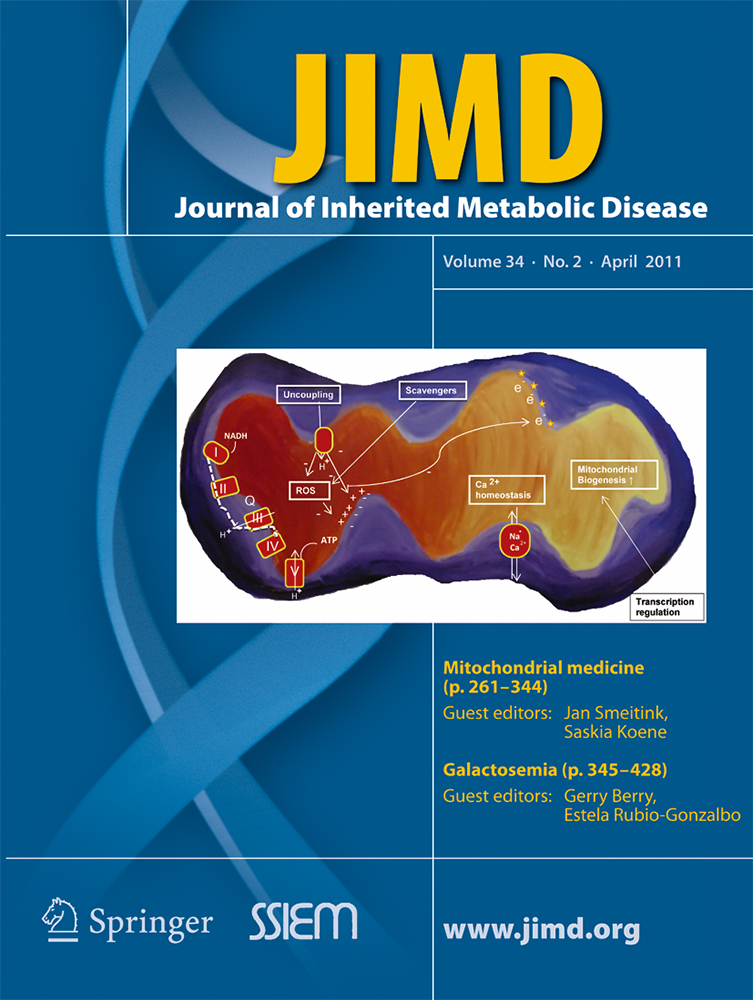Newborn screening for galactosemia by a second-tier multiplex enzyme assay using UPLC-MS/MS in dried blood spots
Communicated by: Piero Rinaldo
Competing interest: None declared.
Abstract
Galactosemia is one of the most important inherited metabolic disorders detected by newborn screening tests. Abnormal results during screening should be confirmed by enzyme activity assays. Recently, we developed a multiplex enzyme assay for galactosemia in erythrocytes using ultra-performance liquid chromatography-tandem mass spectrometry (UPLC-MS/MS). In this study, we proposed a second-tier multiplex enzyme assay for galactosemia that can be directly applied to dried blood spots (DBSs). Supernatants from two rehydrated-punched 3.2-mm DBSs were incubated with a reaction mixture containing [13C6]galactose, [13C2]galactose-1-phosphate, and UDP-glucose as substrates for three galactose-metabolizing enzymes. After a 4-hour incubation, the end products from the combined reaction mixture, [13C6]galactose-1-phosphate, UDP-[13C2]galactose, and UDP-galactose, were simultaneously measured using UPLC-MS/MS. Substrates, products, and internal standards from the mixture of the three enzyme reactions were clearly separated in the UPLC-MS/MS system, with an injection cycle time of 10 min. Intra- and inter-assay imprecisions of the UPLC-MS/MS were 8.4-14.8% and 13.2-15.7% CV, respectively. Enzyme activities in DBSs from 37 normal individuals and 10 patients with enzyme deficiencies were analyzed. DBSs from galactosemia patients showed consistently lower enzyme activities as compared to those of normal individuals. In conclusion, multiplex enzyme assays using UPLC-MS/MS can be successfully applied to DBS analysis. This method allows a fast and effective second-tier test for newborns showing abnormal screening results.




